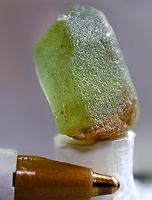
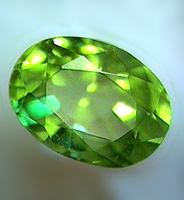
The Olivine Group is made up of two "end members" one with iron (Fe) and the other with magnesium (Mg). In the real world there is probably never a pure olivine, most are combinations of the two end members. Fe2SiO4 ( Fayalite ) and Mg2SiO4 (Foresterite). A combination formula might look like this: (Mg,Fe)2SiO4
Olivine occurs in the crust, ocean crust, and upper mantle and is not rare, except as clean crystals. It normally grows in small granular forms. As a gem it is known as peridot.
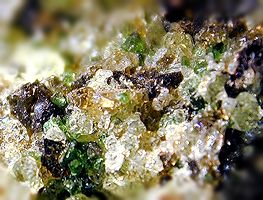
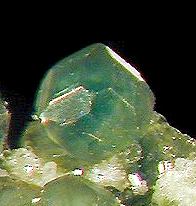
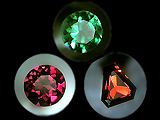
The Garnet Group is another with the isolated silicate structure. As with olivine it is made up of different substitution patterns, but unlike olivine it has many "end members" and thus a variety of different chemistries.
The general formula is
A3B2(SiO4)3
Where A can be any of the following: Mg+2, Fe+2, Ca+2, and Mn+2. The B elements can be any of the following: Al+3, Fe+3, Cr+3 or a mixture thereof.
It is commonly found in metamorphic rocks or a few igneous types. It has no cleavage and reasonably good hardness, so it makes a good gemstone. Because it has a wide variety of possible chemical formulas, it can be found in a rainbow of colors.
One of the important uses for garnet is the manufacture of wood sandpaper.
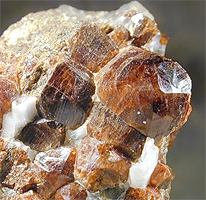
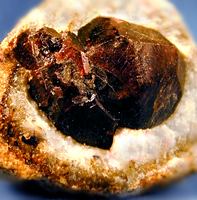
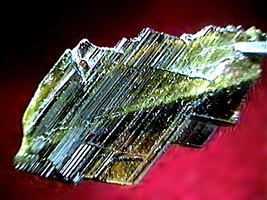
The pyroxene and amphibole groups both contain chain structures. the pyroxene group has a single chain and the amphibole a double chain.
The pyroxene general formula is (SiO3)-2n .
The amphibole general formula is (Si4O11)-6n .
The formulas for both groups are very complex, and there is frequent substitution forming a wide variety of minerals with different colors and properties.
pyroxene : AB(SiO3)2
where A and B : Mg+2, Fe+2, Ca+2, Mn+2, Na+1 and Al+3. (whatever combinations is needed to balance the formula.)
One of the most common pyroxenes is "augite" with the formula Ca(Mg,Fe,Al)((Si,Al)O3)2 .
The amphibole group has one of the most complex chemical formulas among minerals.
amphibole: A2B5(Si4O11)2(OH)2
where A can be: Ca+2, Mg+2, Fe+2, or Na+
and B can be: Mg+2, Fe+2, Fe+3, or Al+3
Actinolite, anthrophyllite, crocidolite, grunerite, and tremolite are all varieties of the amphibole asbestos. Tremolite has the formula Ca2Mg5(Si4O11)2(OH)2
the most abundant amphibole is hornblende
(Ca,Na,K)2-3(Mg,Fe,Al)5(Si4O11)2(OH)2
Ca(Mg,Fe,Al)((Si,Al)O3)2
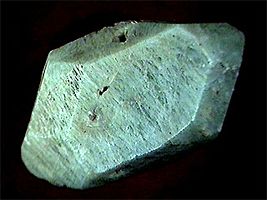
CaMg(SiO3)2
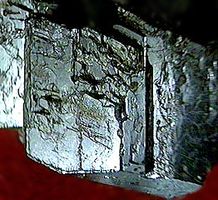
(Ca,Na,K)2-3(Mg,Fe,Al)5(Si4O11)2(OH)2
| NEXT | TOC | PREV |